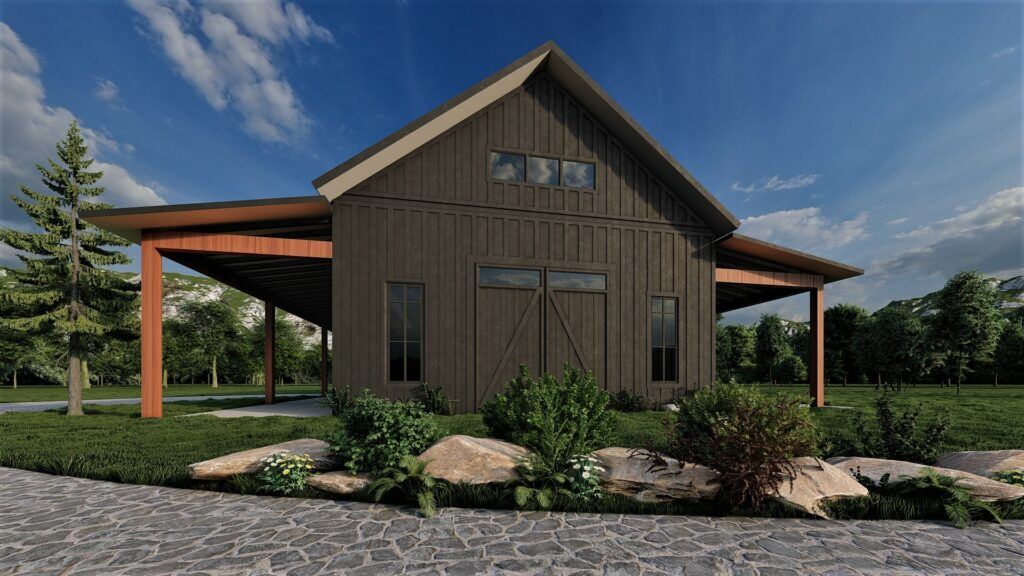Barndominiums Vs. Conventional Residences: a Detailed Contrast of Lifestyle and Capability
The decision between barndominiums and standard homes includes various aspects, consisting of way of living preferences and useful demands. Barndominiums are characterized by their open formats and flexibility, often appealing to those that prioritize common living and flexibility.
Review of Barndominiums
Barndominiums, an unique real estate trend acquiring popularity throughout numerous regions, mix the rustic appeal of barn-style design with the functionality of contemporary space. These special structures generally contain a steel or wood framework, combining open floor strategies and high ceilings with energy-efficient features. Often positioned on expansive rural buildings, barndominiums use homeowners the opportunity to appreciate a serene way of living while offering ample room for various activities.
The convenience of barndominiums prolongs past their aesthetic appeal; they can offer as both living quarters and practical rooms for pastimes, workshops, and even small companies. Their adaptive style enables easy modification, fitting diverse family demands and preferences. Several owners appreciate the reduced upkeep demands connected with metal house siding and roof, contributing to long-lasting resilience.

Attributes of Conventional Houses
Stressing ageless style and comfort, standard homes are identified by their distinctive building styles, which typically show historic impacts and local aesthetic appeals. Common attributes consist of in proportion facades, gabled roof coverings, and an emphasis on craftsmanship, leading to a cozy and welcoming ambience.
Standard homes usually incorporate aspects such as crown molding, wainscoting, and hardwood flooring, boosting their timeless charm. They normally include several areas with defined objectives, promoting household interaction while enabling privacy. view now. The layout frequently consists of official living and dining areas, which are helpful to entertaining guests and hosting family events
Exterior products such as block, wood, or rock are regularly used, adding to toughness and a feeling of durability. Barndominium repair. Furthermore, numerous standard homes are created with front decks or stoops, promoting a feeling of community and link with the area
Landscape design plays a considerable duty in conventional home layout, with properly maintained yards and paths that improve curb charm - see website. In general, typical homes embody a sense of fond memories and stability, interesting those who value heritage and a more organized living setting
Expense Comparison
Generally, an expense comparison in between barndominiums and typical homes reveals significant distinctions in construction costs and overall investment. Barndominiums, commonly built from steel or steel frames, commonly sustain reduced material and labor expenses than traditional homes developed from timber and brick. The streamlined layout of barndominiums can translate to decreased building times, additionally decreasing labor expenses and speeding up tenancy.
Typically, the cost per square foot for a barndominium varies from $100 to $150, while typical homes can vary commonly, generally falling in between $150 and $300 per square foot, relying on area, products, and layout complexity. This price difference makes barndominiums an attractive alternative for budget-conscious buyers seeking larger living areas without giving up quality.
In addition, barndominiums might bring about long-term savings via lower upkeep costs, power efficiency, and insurance coverage prices. Their resilient building and construction materials usually require less maintenance over time contrasted to typical homes. However, it is important to think about that while first expenses may be lower for barndominiums, the final financial investment will certainly likewise depend upon private modification and wanted facilities, which can influence the general expense in both housing kinds.
Way Of Living and Room Factors To Consider
When considering way of life and room, barndominiums use a special adaptability that attract a variety of house owners. These hybrid frameworks combine domestic dealing with practical area, usually including open layout that can be adjusted to match specific demands. This adaptability is particularly useful for families or people seeking an individualized living atmosphere, allowing for diverse uses such as office, workshops, or entertainment locations.

Additionally, the visual appeal of barndominiums can satisfy both rustic and modern tastes, making them a flexible choice for numerous layout choices (Barndominium builder). Eventually, the option between a barndominium and a typical home usually rests on how well each option straightens with the property owner's lifestyle ambitions and this website spatial demands, highlighting the importance of thinking about individual top priorities in the decision-making process
Environmental Influence and Sustainability
The environmental influence and sustainability of barndominiums existing engaging advantages compared to conventional homes. Mainly constructed from steel and other sturdy materials, barndominiums are often built making use of recycled resources, minimizing the demand for brand-new products and minimizing waste. Their style usually highlights open areas, which can lead to reduced power intake for heating & cooling contrasted to traditional homes with even more segmented formats.
Additionally, barndominiums can integrate lasting features such as solar panels, rainwater harvesting systems, and progressed insulation techniques, enhancing their energy performance. The flexibility of their design enables homeowners to integrate these innovations more effortlessly than in lots of traditional homes, which may require comprehensive retrofitting.
Additionally, barndominiums often need less sources for building as a result of their less complex, extra efficient designs. This not only decreases the carbon impact connected with building but also contributes to an extra lasting way of life. In comparison, traditional homes may involve greater degrees of energy expense and source utilize throughout their lifecycle, from construction to maintenance. Overall, barndominiums stand for a forward-thinking method to sustainable living, aligning with contemporary environmental priorities.
Verdict
In recap, the choice in between barndominiums and conventional homes hinges on private lifestyle preferences and useful needs. Barndominiums, with their open designs and lasting products, cater to those seeking adaptability and communal living.